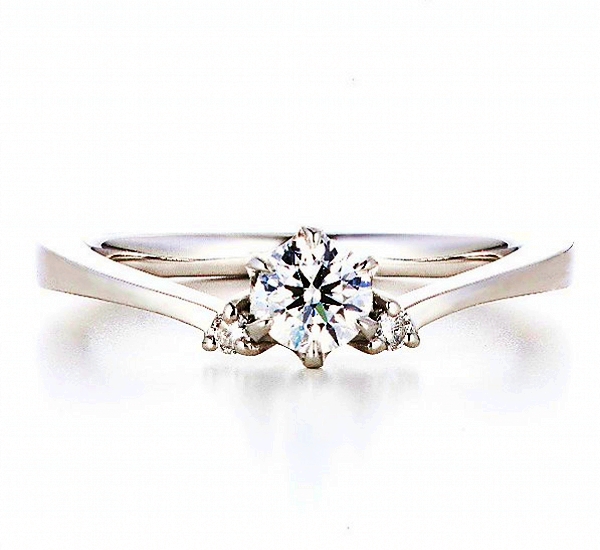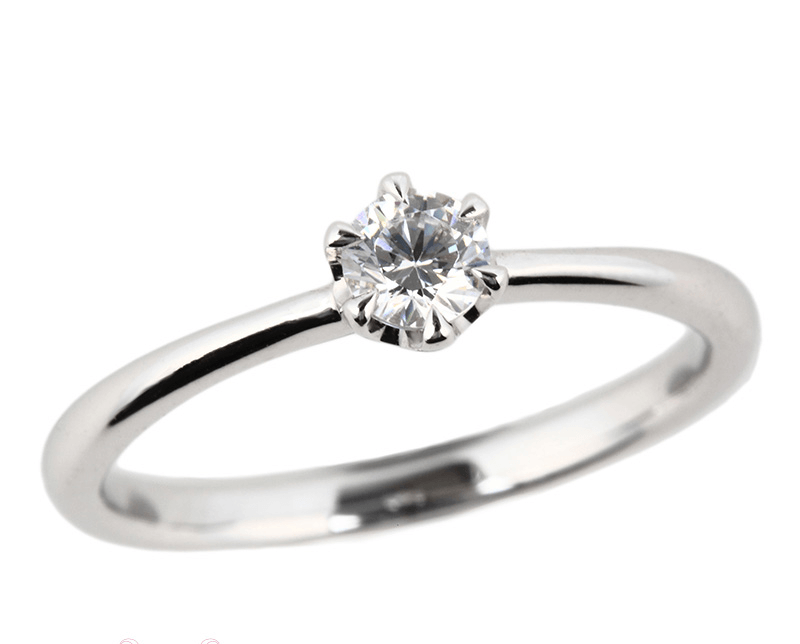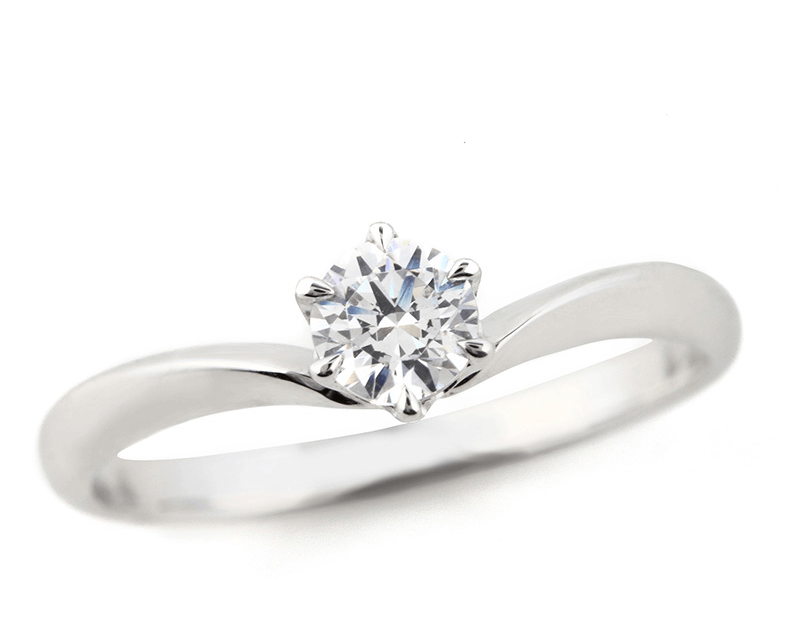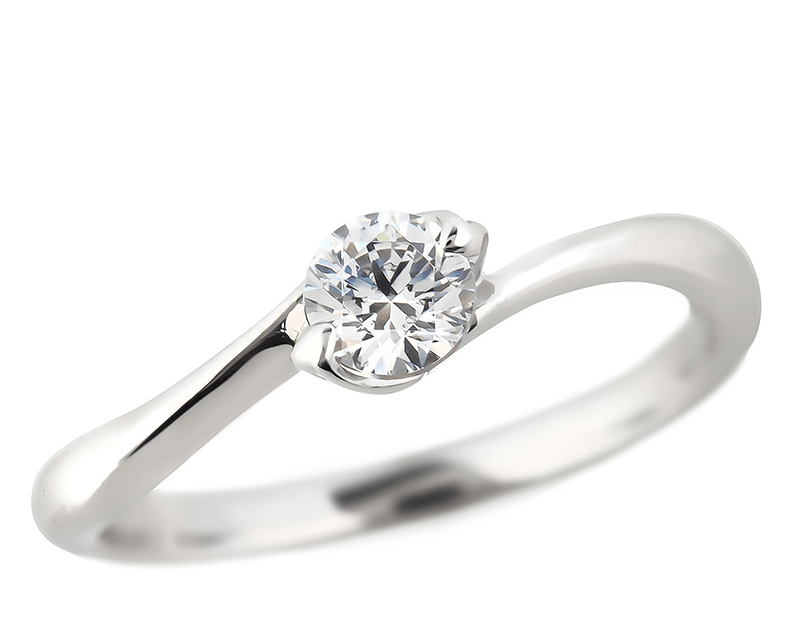Diamonds are chosen based on the standards called “4C“, which refers to Carat, Color, Clarity, Cut. Let us move on to selecting the most important aspect of your Engagement Ring.
Carat (Ct)
Measurements of a Diamond’s Carat is based on its weight. A metric Carat is defined as 200 milligrams (0.2 grams).
Each carat can be subdivided into 100 point, which allows very precise measurements. For Diamonds below 1 Carat, a jeweller may describe its weight by ‘points’ alone. For example, the jeweller may refer to a Diamond that weighs 0.25 Carats as a ‘twenty-five pointer.’Diamonds above 1 Carat are expressed in carats and decimals. For example, the jeweller may refer to a Diamond that weighs 1.08 Carat as ‘one point oh eight carats’.
With the condition of all else being equal, a Diamond’s price increases in accordance to its Carat, because larger Diamonds are much rarer and therefore more desirable. However, 2 Diamonds of equal Carat can have very different values (and prices) depending on 3 other factors of the Diamond’s 4C.

Color
GIA’s Color-Grading Scale for diamonds has been used as an industry standard. The scale begins with the letter D, representing colorless, and continues with increasing presence of color to the letter Z, which is light yellow or brown. Each letter grade has a defined range of color appearance. Diamonds are color-graded by comparing them to stones of known colors under controlled lighting and precise viewing conditions.
Many of these color distinctions are so subtle that it will appear invisible to the untrained eye. But these slight differences makes a very big difference in Diamond Quality and Price.

Clarity
Natural Diamonds are formed under extreme high temperatures as well as pressure deep within the earth. This results in a variety of internal characteristics called Inclusions and external characteristics called blemishes.
A Diamond of Clarity“VS1” and “SI2” may look the same in untrained eyes. Clarity is Graded under standard viewing conditions with 10x magnification.
FLAWLESS (FL)
No inclusions or blemishes are visible to a skilled grader using 10× magnification
INTERNALLY FLAWLESS (IF)
No inclusions and only blemishes are visible to a skilled grader using 10× magnification
VERY,VERY SLIGHTLY INCLUDED (VVS1,VVS2)
Inclusions are present but hardly visible to a skilled grader using 10× magnification
VERY SLIGHTLY INCLUDED (VS1,VS2)
Inclusions are present and range from hardly visible – visible to a skilled grader using 10x magnification
SLIGHTLY INCLUDED (SI1,SI2)
Inclusions are present and very noticeable to a skilled grader using 10x magnification
INCLUDED (I1,I2,I3)
Inclusions are present and very obvious to a skilled grader using 10× magnification and may affect transparency and brilliance
During a Diamond’s natural formation, virtually all Diamonds contains small imperfections. Flawless {FL} refers to Diamonds that are completely without such imperfections.

Cut
Diamonds are renowned for its ability to transmit light and intense sparkle.
Beauty and Value of a Diamond is highly dependent on its Cutting. It is said that a Diamond’s Cut is the most complicated and toughest part in judging a Diamond’s 4C.
For Round Brilliant Cuts, GIA grades Diamonds based on these 3 optical features:
Brightness: Amount of Internal and External white light reflected.
Fire: Scattering of white light into colors of the rainbow.
Scintillation: Amount and Intensity of sparkles a Diamond can produce.
A Diamond’s Cut Grade is further sub-divided into 3 categories, where the design and craftsmanship is taken into account.
Cut: The Diamond’s weight relative to its diameter, and its girdle thickness, which affects its durability.
Symmetry: The symmetry of its facet arrangement.
Polish: The quality of polish on the Diamond’s facets.
In a Perfect Cut Diamond, 8 distinct arrows can be seen when looked though the loupe from a top down view, and 8 hearts from a bottom up view.

 结婚对戒如果被称为情侣之间的誓言,那么订婚钻戒就是情人的郑重誓言。恋爱双方将来为婚姻许下的诺言,就是在这份爱的誓言中。男孩给女孩送上订婚钻戒的那一刻,就表达了”我会照顾你一辈子”的终生承诺。戴这个戒指,女孩将为她的婚姻生活做好准备。而 这个纯洁而浪漫的时刻将是所有恋人最美好的回忆之一。
结婚对戒如果被称为情侣之间的誓言,那么订婚钻戒就是情人的郑重誓言。恋爱双方将来为婚姻许下的诺言,就是在这份爱的誓言中。男孩给女孩送上订婚钻戒的那一刻,就表达了”我会照顾你一辈子”的终生承诺。戴这个戒指,女孩将为她的婚姻生活做好准备。而 这个纯洁而浪漫的时刻将是所有恋人最美好的回忆之一。










